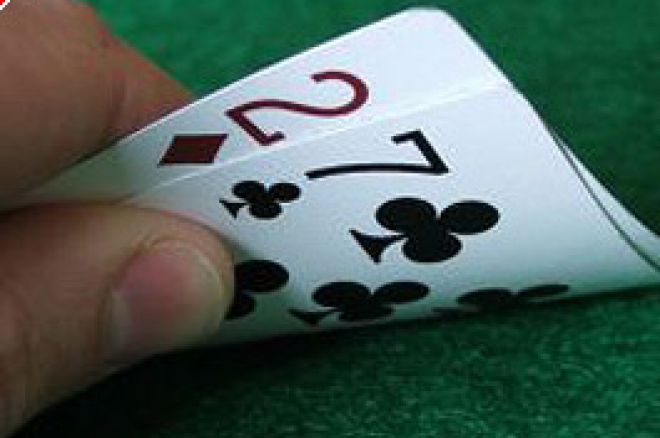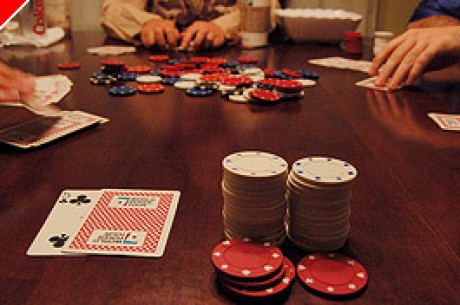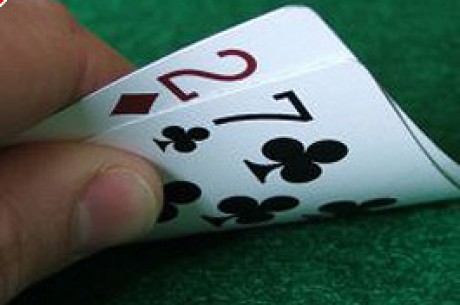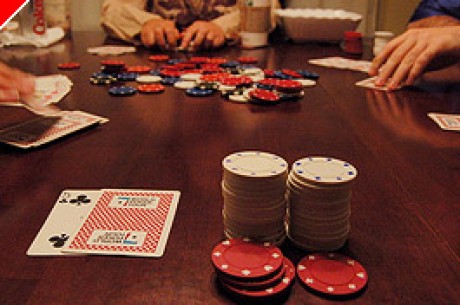The 'Other Games' of Poker: Chinese Poker, Part II

Last week, we introduced you to the rules of the incredibly addictive but utterly enjoyable game of Chinese Poker, a 13-card, poker variant that is a frequent high-stakes pastime of many a World Series of Poker bracelet winner. This week we'll continue our discussion of the game, expanding upon basic strategy, the scoring of bonus hands, and some additional variations on traditional Chinese Poker including a 17-card, three-handed version invented by a WSOP Main Event champion. For a quick refresher on the rules and scoring, check out last week's column.
Bonus Hands
So we know that players are awarded two points for winning two out of three hands vs. an opponent and four points for "scooping" three out of three hands. In games played with bonus hands, or "royalties," additional points are awarded for high hands. Your mileage may vary from casino to casino, but typical bonus hands and awards include the following:
Straight flush in the back or middle hand: 4 points
Quads in the back or middle hand: 3 points
A full house in the middle hand: 1 points
Trips in the front hand: 2 points
Even more extraordinary hands such as a 13 card straight, a 13 card flush, and six pair are called "naturals" and automatically scoop each opponent for a total of 12 points.
Chinese Poker Variations
In many high-stakes Chinese poker games the middle hand is replaced by a deuce-to-seven lowball hand. Instead of setting a hand that is higher in value than the back hand but lower than the front, players must form their lowest hand possible in the middle. In deuce-to-seven, aces are high, not low and straights and flushes count against you. The best possible deuce-to-seven hand is 2-3-4-5-7 (also called a "wheel").
Also floating around in high-stakes games is a 17-card version of Chinese Poker that was developed by 2004 WSOP Main Event champion Greg Raymer. Played two or three-handed, players set four hands instead of the typical three. The back, middle, and front hands remain the same, but the fourth one is a four-card badugi hand. Ba-what? It's a four-card lowball game where the objective is to make your best possible low hand containing all four suits. Aces are low in this variant, and the best possible hand is an A-2-3-4 rainbow (all different suits). For more details and specifics about badugi, check out this article.
Basic Strategy
When setting a hand, a player's primary objective should be to not get scooped. Even winning only one out of three hands will save a player two points. A quality Chinese poker hand has a "lock" on at least one of the three hands. For example, in a hand with a queen high flush in the back, tens-up in the middle, and A-A-J in the front, the A-A-J will almost always win over all of your opponents' front hands. Thus, it's very difficult to get scooped with this holding. The same would be true of a hand that contained a small full house in the back, a king-high flush in the middle, and a small pair in the front. Though the back hand could easily lose to a bigger boat and the front to a bigger pair, the king-high flush in the middle is a virtual lock. This is another hand that will almost never be scooped, and additionally it's in a good position to scoop a number of weak-ish hands (i.e. flush/two pair/ace-high).
An frequent error new players make at this game is to find the best hand possible among their 13 cards and immediately play it in the back, while forming the middle and front hands with whatever cards are leftover. This notion is almost always wrong-headed, as one monster hand and two marginal hands will never be enough to scoop and frequently end up a loser when all the scores are tallied.
Let's say we're dealt the A♥A♠K♣Q♣Q♦J♣J♦10♥9♠7♦6♠5♦2♥ (3 hearts, 3 spades, 3 clubs, 4 diamonds). On first glance a novice would notice that no flushes are possible, and the best hand would be a Broadway straight. However, since playing it would break up all three pairs in the hand, our novice puts the king-high straight in the back (K♣Q♦J♦10♥9♠), the aces in the middle (A♥A♠6♦5♦2♥), and is left with only the (Q♣J♦7♦) in the front. The way it's set right now, this hand is begging to get scooped. The king-high straight is not a very strong back hand and can lose to a higher straight, any flush, and any full house (all common back hands). The aces in the middle have some chance of holding up on their own, but the queen-high front hand is just a disaster.
What if, instead we put the pair of aces in the back? Suicide? Not exactly. By breaking up the king-high straight, we leave ourselves with three high pairs, the A♥A♠, Q♣Q♦, and the J♣J♦. With the A♥A♠6♦5♦2♥ in the back, the Q♣Q♦10♥9♠7♦ in the middle and the J♣J♦K♣ in the front, we have a near-lock on at least one hand (the J-J-K in front) thus avoiding a scoop, and have a fighting chance at the middle with the pair of queens.
Breaking up pairs is one of the most difficult decisions to make in Chinese poker. Often times a player will be able to play a flush in the back hand and have two pair leftover. What to do? A good rule of thumb is that in order to not split two pair, you'll need a strong ace (A-K-X, A-Q-X, A-Q-J) to play in the front. So, if you're left with 4-4-3-3-A-K-J-9, the 4-4-3-3-9 should be played in the middle and the A-K-J in front. If you're left with two big pairs (A-A-Q-Q or K-K-J-J) they should almost always be split, creating a very strong front hand.
Here's a few more helpful hints for playing multiple pairs:
$ With three pairs left to play in the front and middle hands, the highest pair should be played in the front.
$ Put the high kicker card in the hand which is most likely to be tied. If you're playing a pair of aces or kings in the middle, throw the good kicker into that hand. When playing a small or medium pair in the front, the kicker belongs there. When playing two pair in the middle, a kicker doesn't really matter because it's incredibly hard to tie a two pair hand.
$ It's usually worth it to break up two pair if it leaves you with a strong straight or flush in the back hand, but it's a bad idea to break up three pair or more.
$ If you are dealt four pairs with some strong kicker cards, setting two pair in the back, two pair in the middle and the high cards in the front (i.e. A-K-Q) is the best move. If you have lousy kicker cards to go with your four pair, play two pair in the back, a pair in the middle and a pair in the front.
Simply by reading this and following some simple basic strategy, you'll already be miles ahead of your competition. Give Chinese a try. But don't hold me responsible for the addiction that will ensue.








